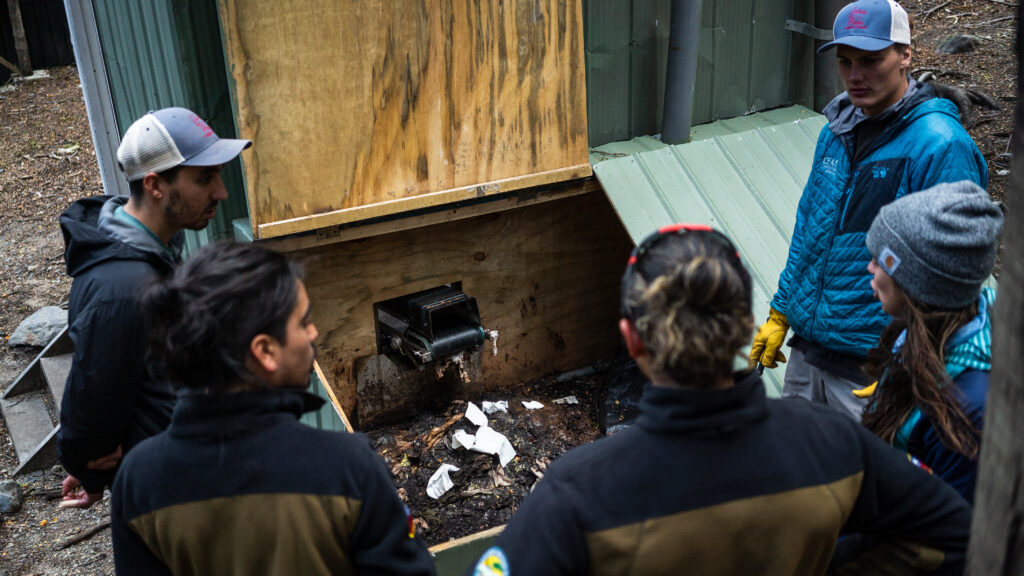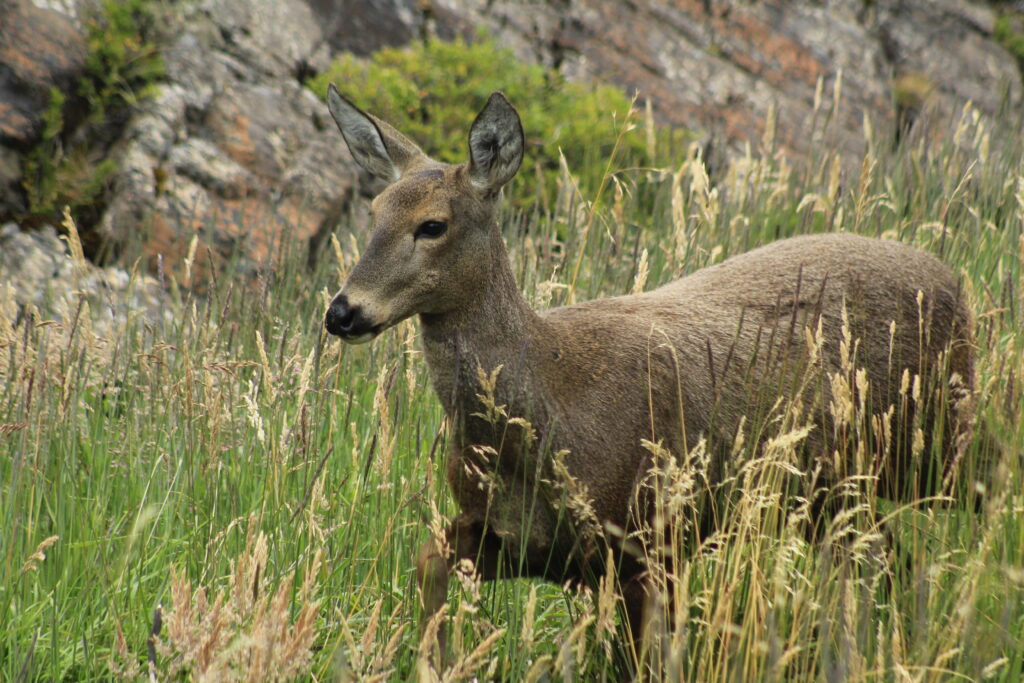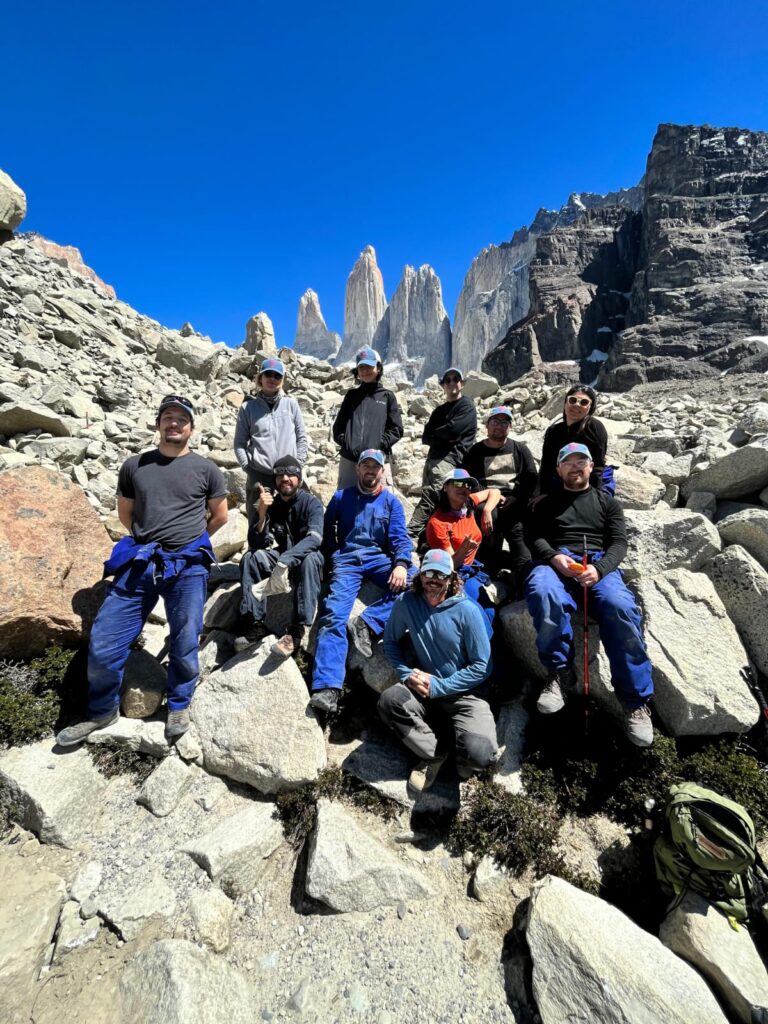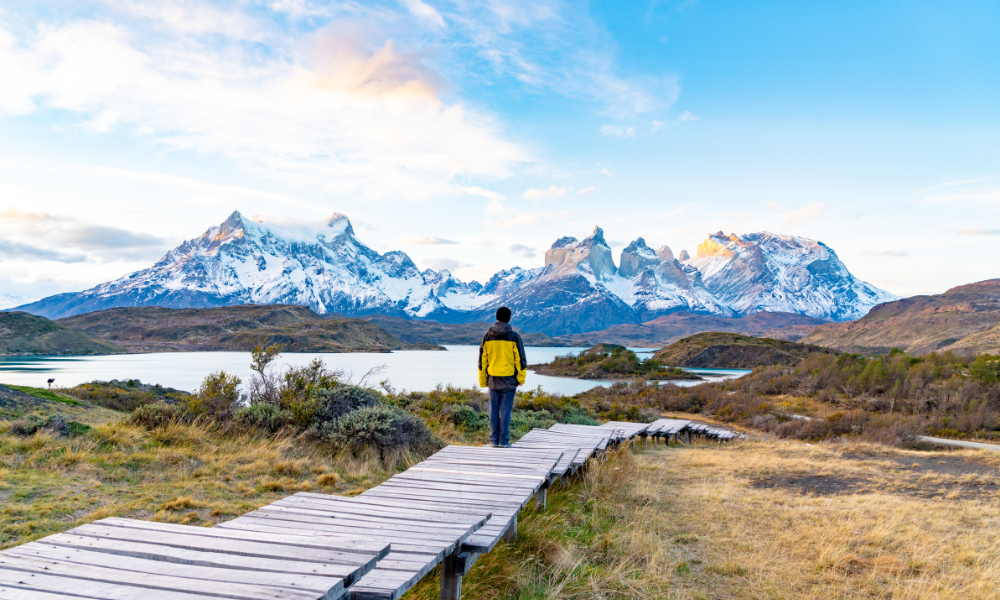Nestled in the breathtaking landscapes of Chile’s Magallanes Region, Torres del Paine National Park and the port city of Puerto Natales stand as beacons of natural beauty and cultural heritage within the Última Esperanza province. Recognized as a UNESCO Biosphere Reserve since 1978 and often hailed as the eighth wonder of the world, Torres del Paine symbolizes the delicate balance between conservation and the impacts of human activity.
Founded in 2014 in response to rapidly increasing visitation to the region, the Torres del Paine Legacy Fund is a program of CREST that mobilizes human and financial resources for sustainability action projects in Torres del Paine National Park and its surrounding communities. Since 2014, the Legacy Fund has leveraged an MOU with Chile’s National Forestry Corporation (CONAF) and partnerships with dozens of other local & international tourism business to support Torres del Paine’s conservation, protected area infrastructure, and community development efforts.

Under the leadership of the Legacy Fund’s Director, biologist Fiorella Repetto-Giavelli, our team is pioneering a groundbreaking destination impact initiative. This model merges the principles of destination stewardship, impact tourism, and traveler philanthropy into a cohesive program. It offers Chileans a unique opportunity to engage with Torres del Paine National Park at no personal cost. Participants spend 7-10 days immersed in the park, where they learn directly from park rangers, engage in meaningful hands-on conservation work, and deepen their understanding of the region’s rich natural and cultural heritage.
This innovative approach allows the Legacy Fund to advance environmental education, cultivate a new generation of conservation leaders in Chile, and expand our efforts to address the complex challenges facing Patagonia’s protected areas. Join us in shaping a sustainable future for these invaluable ecosystems.
IMPACTS
Since 2016, here are some of the highlights of what the Legacy Fund has done with support from tourism stakeholders, partners, volunteers, and visitors:
- Protected multiple acres of wetland through the construction of more than 800 meters of boardwalk
- Installed three urine-diverting / composting eco-toilets in high-mountain areas in need of visitors sewage management.
- Launched a project with the US Fish & Wildlife Service’s support to conserve the endangered huemul through tourism industry commitments, interpretation development with local guides, and by addressing threats from privately-owned domestic livestock.
- Constructed more than 12 km of sustainable trail on Torres del Paine National Park’s W Circuit and O Circuit
- Monitored the reforestation of more than 60,000 individual lenga seedlings in forest fire affected areas of Torres del Paine National Park
- More than 476 Chilean volunteers have visited Torres del Paine National Park for the first time.
- Removed more than 3-square kilometers of invasive species from the national park.
- Financially supported 4- local tourism businesses through a post-Covid reactivation fund.
Current Projects TDP Legacy Fund
Nestled in the breathtaking landscapes of Chile’s Magallanes Region, Torres del Paine National Park and the port city of Puerto Natales stand as beacons of natural beauty and cultural heritage within the Última Esperanza province. Recognized as a UNESCO Biosphere Reserve since 1978 and often hailed as the eighth wonder of the world, this area symbolizes the delicate balance between conservation and the impacts of human activity. Amidst this backdrop, the Torres del Paine Legacy Fund is spearheading an urgent conservation mission: the preservation of the endangered huemul, Chile’s national animal.

The South Andean Deer, known locally as the huemul (Hippocamelus bisulcus), is a species on the brink. With fewer than 1,500 individuals left across Argentina and Chile, and less than a thousand in Chile alone, the huemul faces a critical fight for survival. Despite being protected by a binational agreement between Chile and Argentina, the huemul’s existence is severely threatened by habitat fragmentation, disease, and the encroaching pressures of livestock raising and tourism.
Torres del Paine National Park, a sanctuary of dense Southern Beech forests and rugged shrublands, provides a refuge for the huemul. Yet, the very essence of this refuge is under siege. Unchecked tourism and the presence of large cattle ranches in the vicinity contribute to a landscape where the huemul’s habitat is increasingly fragmented, pushing this emblematic species towards an uncertain future.
The Legacy Fund’s huemul project is a bold step towards reversing this trend. Recognizing the park’s vital role in the local economy—generating thousands of jobs and drawing adventurers from around the globe—it seeks to harmonize economic benefits with conservation imperatives. The project is rooted in community education, aiming to foster a deep-seated appreciation for the huemul and its ecosystem among residents and visitors alike.
However, the challenges are manifold. Infrastructure strain, overcrowded trails, and past environmental disasters have highlighted the pressing need for sustainable management. The project advocates for responsible tourism, the restoration of native habitats, and the implementation of a sustainable trail system, particularly along the iconic Base of the Towers Trail. This trail, marred by erosion and habitat encroachment, symbolizes the broader struggle for balance in Torres del Paine.
At the heart of the huemul project is a vision for a future where conservation and community go hand in hand. By safeguarding the huemul’s habitat, promoting environmental awareness, and encouraging sustainable practices, we aim to ensure that Torres del Paine remains a wonder for generations to come.
Torres del Paine’s rapid increase in popularity amongst outdoor enthusiasts has resulted in a number of sustainability and visitor management challenges. Key amongst these has been the deterioration of the Park’s iconic ‘O’ and ‘W’ hiking trails, which in turn negatively impacts surrounding flora and fauna and the visitor’s ability to enjoy them.
We believe that sustainable trail construction and maintenance is multi-disciplinary. To protect Torres del Paine’s habitats, our trail design and construction methods take into account the following:
- Controlling the movement of water along a trail to prevent erosion, destructive side trails (braiding), and flooding.
- Creating a design that minimizes damage to local flora and fauna, and protects the park’s natural sanctuaries.
- Giving visitors a safe, immersive hiking experience with exceptional viewpoints and breath-taking perspectives.
- Using native lumber and locally–sourced materials for construction projects like boardwalks and bridges.
Torres del Paine has been affected by 3 major forest fires, all started by tourists. Collectively, the 1985, 2005, and 2011-2012 forest fires have burned more than 39,000 Hectares. The photos below highlight some of the large swaths of forests, many of which took thousands of years to grow, decimated from these fires. When the climate is dry, Patagonia’s ferocious wind, crisp air, and dense forests, make forest fires nearly unstoppable.
The blazes consumed nearly 20,000 hectares of native forest, principally lenga (Nothofagus pumilio), ñirre (Nothofagus antarctica), and Magellan’s Beech (Nothofagus betuloides), species key to sustaining the park’s biodiversity and watershed health.
Indeed, many of the park’s species rely on the park’s forest ecosystems for nesting, shelter, food, and nutrients. Lenga’s deciduous, umbrella effect also provides a haven for hillside flora from the harsh Patagonian winds and typically supports a rich understory of lichen, shrubs, flowers, and grasses.
Given lenga’s ecological benefits, CONAF began restoration efforts to accelerate recuperation of the least resilient fire affected areas, mainly those areas previously occupied by pure or mixed lenga forest.
However, ecological restoration is an incredibly time and labor intensive process, and CONAF lacks the human resources to cover this need internally. That’s why the Legacy Fund leads recruitment, training, and management of volunteer groups to collaboratively reforest and monitor reforestation efforts with CONAF.
Since 2005, CONAF has planted more than 900,000 trees in Torres del Paine in conjunction with various partners. The Legacy Fund is working to accelerate this number and to monitor those that have been planted to ensure a successful outcome.
The lasting effects of European colonization have had a major impact on the environment in this region of Patagonia. In Torres del Paine, exotic flora species are now rampant in many areas and often outcompete native plants for nutrients. These exotic species have shifted the face of many sections of the park and put local fauna at risk of losing both food and protection.
The control of these species, according to priorities established by CONAF, is critical to the maintenance of the park’s native ecosystems. When controlling invasive species, our volunteer groups carry-out demanding physical labor to remove the species and allow CONAF to apply a safe treatment that prevents their regrowth.
Since 2018, our team has removed more than 1.3 km squared of retamo (Cytisus striatus) from the National Park. With nothing more than a pick mattock and a positive attitude, volunteers have worked tirelessly to dig deep into the ground, remove retamo by the root, and ensure that the species does not encroach on other flora.
The Legacy Fund values opportunities to share its work with visitors, stakeholders, and the local community through informative talks. As a part of many of our partnerships, we coordinate short activities with their staff and visitors like:
- Visits to tree nurseries;
- Educational talks on the conservation challenges facing Patagonia;
- Trail narrative trainings with guides;
- Presentations at local community events and forums.


